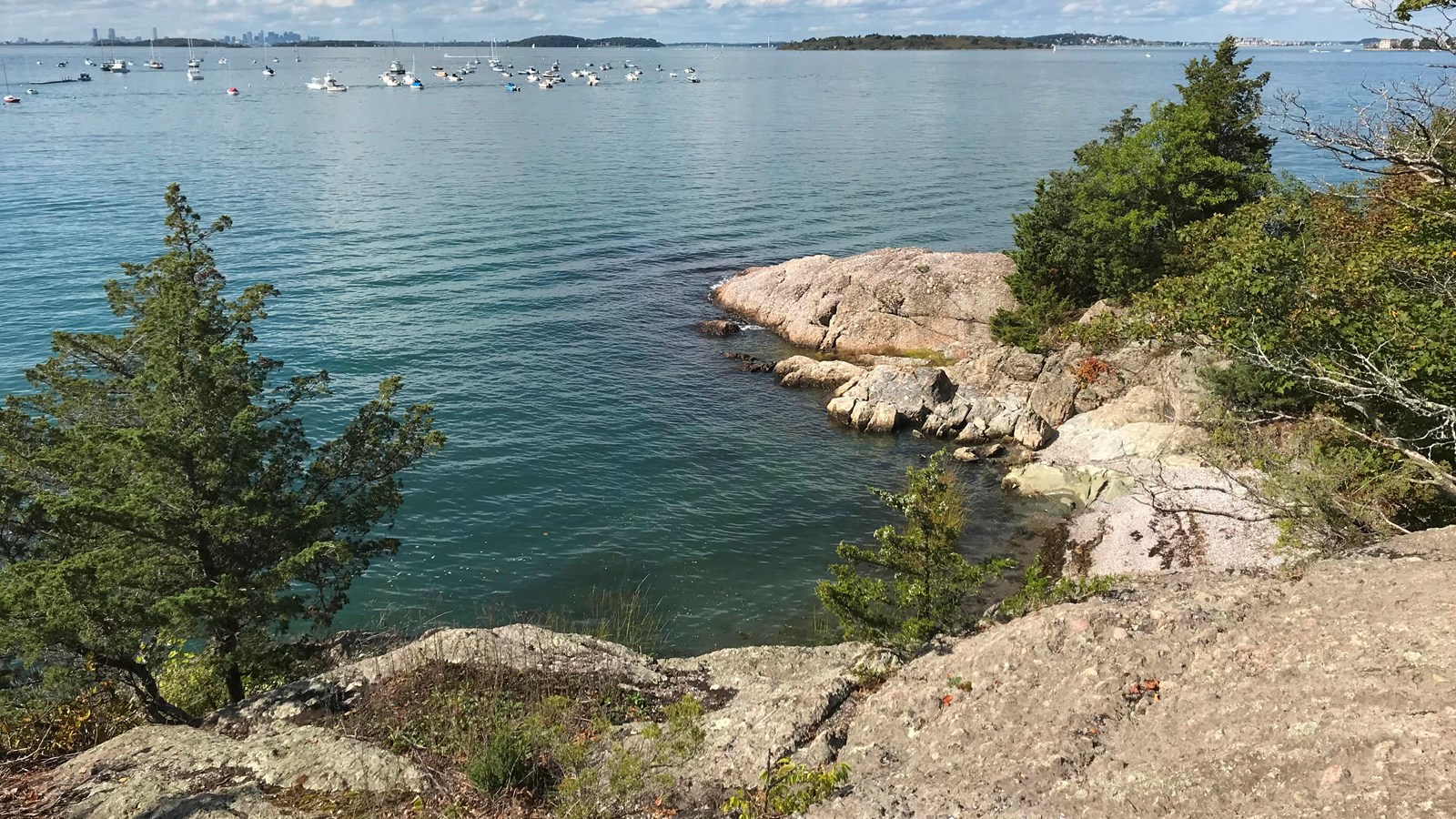Last updated: January 16, 2025
Place
Langlee Island

NPS Photo
Permits Issued, Primitive Campsites, Tent Campsites, Trailhead
Eleven miles South of Boston, in the middle of Hingham Bay sits an eight-acre island called Langlee Island. Its closest in distance to Sarah, Ragged, and Button Islands. Similar to other islands in the harbor, local Indigenous communities likely accessed the island seasonally before European settlers arrived.
John Langlee purchased islands now known as Langlee, Sarah, and Ragged Islands in 1686. Langlee ran a tavern and small boat yard in Hingham. The primary residence of the Langlee family became Ragged Island. At the time of its purchase, the island now called Langlee Island had been called Ibrook's Island. Langlee's daughter Sarah, called "Ragged Sarah Langlee," is said to be the namesake for Sarah and Ragged islands. Sarah Derby (Langlee), later went on to start the first coed school in New England, and one of the earliest in the country.
In 1860 John R. Brewer, who already owned a large parcel of land on World's End, purchased both Langlee and Sarah Islands.1 Brewer hired Frederick Law Olmsted in 1886 to create subdivision plan on World's End. Although they never separated, Olmsted had a variety of trees planted on World's End from 1891-1894. Dedicated to the reforestation of the islands, the tree planting efforts extended to both Sarah and Langlee.2 In the 1893 publication, The History of the Town of Hingham, author Thomas T. Bouve described the island:
a beautiful spot. Steep ledges surround it, except for small intervals, where there are gravelly beaches, upon one of which stands a fine linden. Shrubs abound upon the uplands. It will be, in a few years, more beautiful than now, thanks to the enlightened taste of the gentleman who owns it. He has planted many small trees, which will eventually cover it with forest growth, as was originally the case when the country was settled, and restore it to the condition in which all the islands of Boston harbor should be. Had they been kept so for the past two centuries, the forces of erosion would not have succeeded in practically sweeping some of them from the face of the earth, and destroying the contour of all.3
Today, the island is owned and operated by the town of Hingham. Primitive camping is available on the island, though a permit from the Hingham Police Department is required. Visitors can enjoy foot trails, tall trees, and views of the surrounding islands.
Learn More...
Footnotes
- Edward Snow, The Islands of Boston Harbor (Carlisle, MA: Commonwealth Editions, 2002), 165-166; Olmstead Center for Landscape Preservation, Cultural Landscape Report: Boston Harbor Islands National & State Park, Volume 2: Existing Conditions (Boston: National Park Service, 2017), 93-100.
- Olmsted Center for Landscape Preservation, Cultural Landscape Report: Boston Harbor Islands National & State Park, Volume 1: Historical Overview (Boston: National Park Service, 2017), 187-188.
- Thomas T. Bouve, The History of the Town of Hingham (Hingham, MA: Town of Hingham, 1893), 178.
